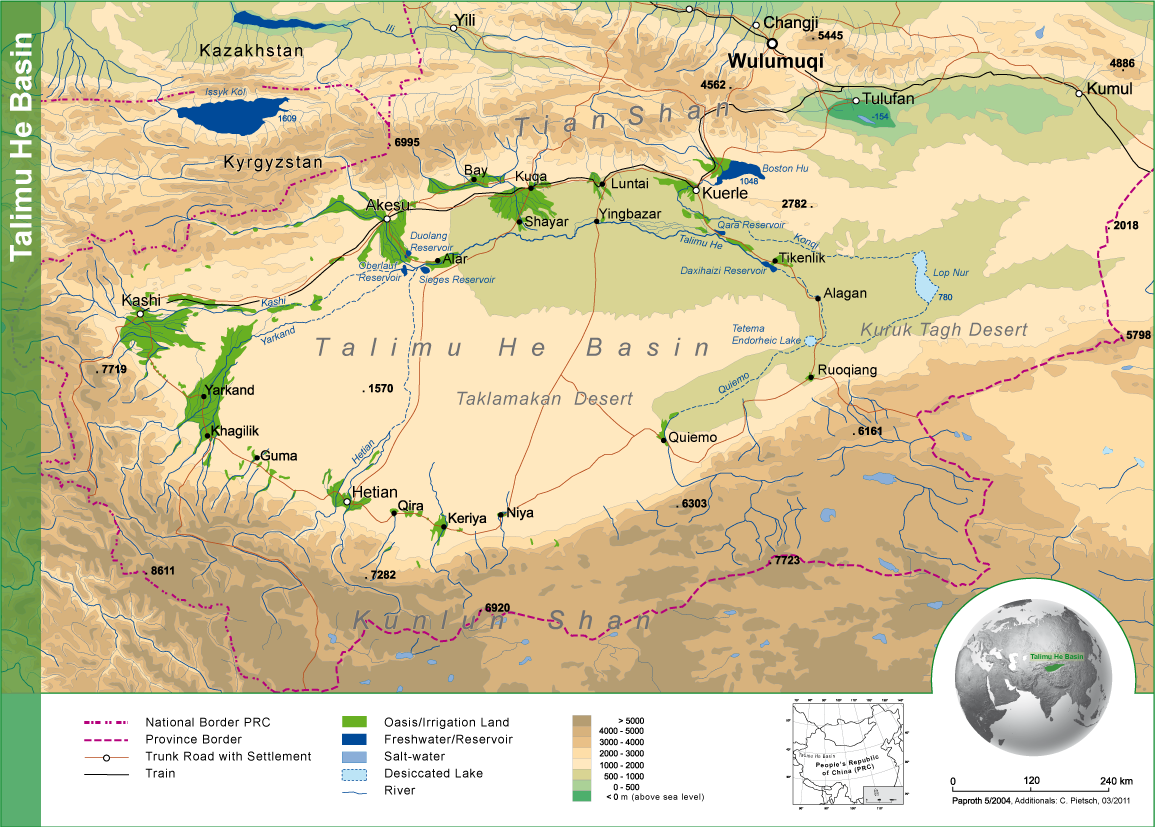The Project SuMaRiO - Sustainable Management of River Oases along the Tarim River
The Tarim River Basin is a large, unique and arid region of extreme vulnerability. The climate is continental with large temperature amplitude, annually and daily. It is, globally, the most remote area from the oceans; hence rainfall is extremely rare and low and does not exceed 50 mm per year. Thus, all kind of economic activities, especially agriculture and urban life, as well as the natural ecosystems depend on the river water as major water source. The Tarim River, which is the largest river of the Tarim Basin, is fed from snowmelt and glacier-melt in the mountains. The water discharge into the Tarim River has been increasing over the last decade. However, global climate change prognoses forecast a shrinking water supply within this century. Due to strong extension of irrigated agriculture in oases along the rivers since the 1950s river flows have strongly decreased, leading to a degradation of floodplain vegetation, while agricultural soils have become unusable due to salinization. There is a clear trade-off between generating income from irrigation agriculture, mainly cotton, at the cost of Ecosystem Functions (ESF) and Ecosystem Services (ESS) provided by the natural ecosystems.
The central question is how to manage land use, i.e. irrigation agriculture and utilization of the natural ecosystems, and water use in a very water-scarce region, with changing water availability due to climate change, such that ecosystem services and economic benefits are maintained in the best balance for a sustainable development.


